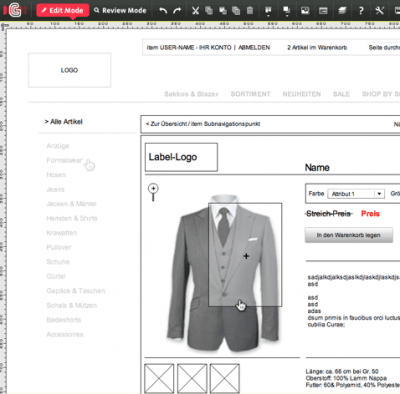When you start with a new customer, the motivation levels for both parties are very high. Your client is picturing how great their new website will look. They're thinking about how it will produce more income so they can take a holiday. They love what you've proposed. And they probably think you're a genius.
The bad news is - this is as good as it gets. If you graph the excitement levels throughout a project lifetime, the high point is right now – at the start. Why? Because now, the work needs to be done. And that causes friction. The client is busy with their day-to-day tasks. They expect you to magically read their mind and know exactly what they want, the first time. They expect you to use your web design wand to conjure up changes in seconds.
The customer is rarely right, but you need to let them think they are, within certain boundaries. The first job should have occurred before reaching the point where you start to argue. You need them to agree to the package you presented. For example, you should have specified the number pages, articles, design revisions included and so forth. They need to sign off on this so you don't get stuck with revision after revision. Well, not at least without them paying more.
The biggest problem with web development projects is "scope creep". This is where the client comes up with different ideas after the project has started. Customers don't understand how much work goes into a website, so they often expect these changes to be included as part of the existing project. It's common for a customer to see a finished website and then say "that's not what I meant" or "I've changed my mind." Developers have devised various methods to avoid scope creep including sitemaps and wireframes. But the best solution is to create a "rapid prototype." Even a basic website takes 25 to 50 hours to build. You need to install Joomla, find a template or design your own, create categories, articles, edit images, create menus, configure extensions etc. There's nothing worse than going to al that effort to hear the dreaded "that's not what I meant." So wouldn't it be great for both you and your customers if you could create a comprehensive mock-up before you start? This is achieved by using rapid prototype software. It does mean that you need to spend more time at the start. But this time is well outweighed by the extra time it can take later. Avoiding this issue also means you keep the motivation levels high as the client also gets frustrated if you have to make lots of revisions.
There are a lot of desktop and online prototype applications available. When you're starting you need to keep costs low so I recommend trying HotGloo. There is a very basic free version but it's really only useful to get a feel for the system. The most basic plan is just $7 a month. The idea is to create your pages quickly by dragging page elements such as text boxes and image placeholders onto the workspace. Then you add functionality to elements such as links to other pages. Although you can add design aspects, this can be a distraction, so in this first stage, it's best to just build the functionality.
 Example of prototype created using HotGloo
Example of prototype created using HotGloo
Once finished, you can show the prototype to your client and get their approval before you spend the effort building the real thing.
The next step is to look at every piece of content and work out who is responsible to develop that content and give them a deadline.
This solution does not solve ALL problems. But it does dramatically reduce the likelihood of scope creep. Your projects will get done on time and on budget when you add this vital step to your website development process.